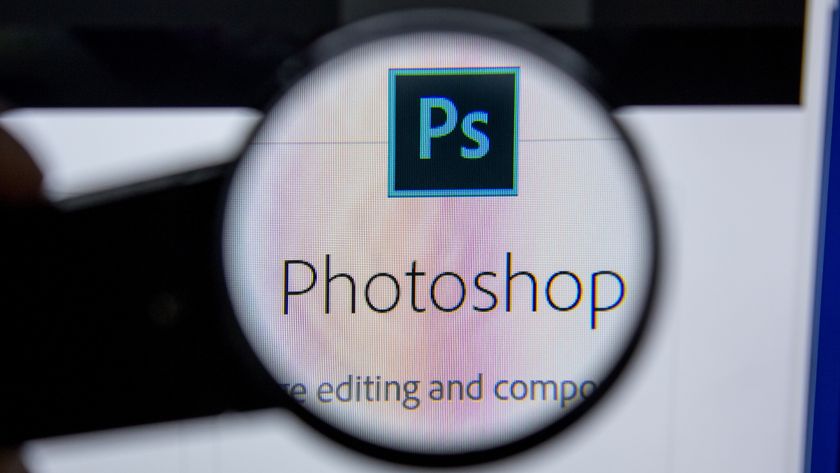Is Flash dead? The future of Adobe's plug-in
Flash vs the open web is a clash with increasing ferocity
This user-support angle is something that Adobe platform evangelist Serge Jespers thinks warrants investigation. "Us geeks have no problem installing a new alpha version of a browser to try out HTML5 implementations, but for the man in the street? He just wants things to work. Flash is a trusted household name that's installed and updated at a faster rate than any other technology out there, making it a safe bet."
Doherty agrees: "Flash has been successful on the web for numerous reasons, and arguably the most important is that it provides a consistent experience for developers and consumers across all major browsers and operating systems." He notes that Flash's reach is expanding and developers will soon be able to create cross-platform applications using Adobe AIR and repackage applications for the iPhone OS using Flash Professional CS5.

CSS3 AT-AT: The CSS3 AT-AT at anthonycalzadilla.com/css3-ATAT/index.html might be clunky, but it points towards a Flash free future
It's perhaps ironic that Adobe evangelists cite a write-once-publish-anywhere model, given that's what open standards have long strived for. In comparison, support for cutting-edge standards aiming to usurp Flash is patchy. There's also the issue of how much functionality can be supplanted.
"Between HTML5, SVG, CSS3 and Canvas 2D, there's a lot that you can do that people would have only used Flash for a couple of years ago, but support is nowhere near the level Flash enjoys," says Ate . "Flash will simply be used for a diminishing number of specific things as browsers add support for various open technologies that are as good or better for achieving certain tasks."
For rich media, this won't happen any time soon, but other areas of Flash's turf are being encroached on. "All kinds of libraries are popping up to tap into the power of HTML5," says MacDonald. "You can visualise data with Processing.js, animate characters in Burst Engine, make games with Cake and draw with Raphaël. I used Processing.js to create a 3D visualisation layer for Cloudkick's cloud management services, and Raphaël to create interactive printable diagrams."

FLASH WARS: Have a look at bit.ly/b4zix1 to see the Star Wars opening crawl created using only HTML and CSS
Get daily insight, inspiration and deals in your inbox
Sign up for breaking news, reviews, opinion, top tech deals, and more.
Inroads are also being made in drawing. "Canvas enjoys widespread support, and with Explorercanvas, you can add support to IE," says Ate . "Canvas isn't very accessibility-aware yet – but then, most Flash developers don't know about or bother making Flash content accessible."
With video, the challenges are greater. "The creators of the HTML5 spec and browsers that have implemented have paved the way for where online video could go, but there are issues with browser vendor adoption and video format support," says Christopher Schmitt, web design specialist and writer of this issue's CSS tutorial. "To show video using HTML5, you must convert it into several file formats, and you still need Flash for IE. Ask yourself whether you should spend time making different video formats or just create Flash video."
Jones likens the struggle to the browser wars. "This time it's Apple v Mozilla, the former championing H.264, which you must pay for, and Firefox advocating Theora." Schmitt adds that: "Flash can use hardware acceleration, easily handle closed captioning and a host of other advances that are the result of years of improvements by Macromedia and Adobe."
It's clear that the tipping point for when HTML5 video becomes the logical choice could be years away. The future of Flash For all the passion surrounding this debate, people are arguing over two sets of currently imperfect technology. Maybe the status quo is best for now: when open standards can't easily or efficiently be used, add Flash components over the semantic layer.
Adobe appears content with this – we asked for a statement and were told it remains committed to supporting HTML5 and considers it complementary to Flash. This seems sensible on the desktop, where, as Kershaw says, "Open standards have a long way to go before they're capable of doing some of the things Flash can do, such as creating an immersive 3D world, or enabling designers to rapidly prototype animations and interfaces for clients."
The speed at which Flash use diminishes there (if it does) will largely be down to Adobe's ability to innovate and deal with performance issues. Things are particularly poor on OS X, and Adobe told us a serious effort is being made to improve this.
Flash Player 10.1 will see a shift to core animation, reducing CPU use, and video performance will almost be as per the Windows version. As for mobile, the future is less clear. Impressive figures abound (Adobe got four hours' Wi-Fi Flash video playback from Android and WebOS during Mobile World Congress 2010), and Doherty tells us Flash Player 10.1 is "designed for uncompromised web browsing on mobile devices, including support for multi-touch".

FLASH GAMES: Even if it's ditched in favour of simpler components, Flash will remain essential for browser-based rich media experiences for many years
However, Adams considers Flash on mobile today an unavoidably poor experience. "Users want existing Flash games and sites to work, but this can't happen because a touchscreen isn't the same as a mouse, and most current Flash content is fundamentally dependent on mouse interaction. You can't point without tapping or move without dragging, preventing tasks as basic as steering a spaceship without firing or previewing an action before confirming it."
Although workarounds exist, Adams considers them awkward, and they require content to be updated, which in many cases won't happen. "And the iPhone has proved users do like non-Flash alternatives, such as downloadable games and standards-based video players."
Ate agrees: "Major websites using Flash have had to find a way to offer content to mobile devices without using Flash. As a result, the experience for mobile users is better than it would have been." iPhone OS may be the thin end of the wedge.

SUBLIME: If you are interested in Flash free video then have a look at jilion.com/sublime/video
In the future, Flash looks set to become more of a cross-platform app development environment than a ubiquitous browser plug-in, and open standards will take over most of its tasks. "Flash can't cement itself in browsers, but HTML can," says MacDonald. "And that's the whole issue in a nutshell."
----------------------------------------------------------------------------------------------------
First published in .net Issue 202
Liked this? Then check out Does Jobs really believe his Adobe attack?
Sign up for TechRadar's free Weird Week in Tech newsletter
Get the oddest tech stories of the week, plus the most popular news and reviews delivered straight to your inbox. Sign up at http://www.techradar.com/register












